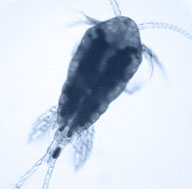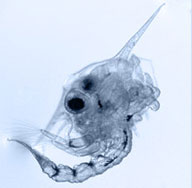Natural Season Cycles

Plant plankton, or phytoplankton, which constitute the pasture of the open sea, have very marked seasonal cycles of abundance and naturally zooplankton, which rely on them for food, are subject to similar seasonality. In temperate latitudes, spring is a time of major plant growth in the sea just as it is on land.
A combination of increasing light intensity as the sun climbs higher in the sky, warming and stratification of the upper layers and adequate nutrient supplies left over from the generally unproductive winter, stimulates what is known as the spring bloom.
Stratification occurs because higher air temperatures warm the surface waters which, in consequence, become less dense and more resistant to mixing with the cooler denser water beneath.

This is beneficial to production at first but once the key nutrients, chiefly nitrogen and phosphorus, are used up the density gradient restricts the entry of new nutrients from deeper layers and the spring bloom declines rapidly.
Zooplankton often time their reproduction to exploit the bloom conditions. They may release their fertilised eggs so that hatching larvae have a rich food supply or adults may feed voraciously while they can to convert the energy of the food into eggs.
These will be released in late summer or autumn and sometimes eggs or larvae remain dormant through winter, perhaps in cool, deep water awaiting the next spring bloom.
Thus spring usually produces a huge increase in abundance of larval stages in the water. Some are from the holoplanktonic species but, particularly in shallow coastal waters, these are joined by a great diversity of meroplanktonic forms: crab larvae, worm larvae, larvae of oysters, snails, seastars and many others.

